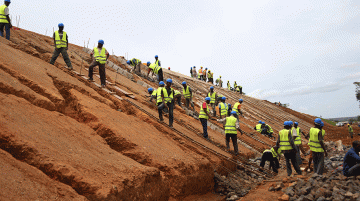This week saw the launch of the newest phase of Kenya’s Standard Gauge Railway (SGR,) connecting the port in Mombasa to the Rift Valley town of Naivasha. The Mombasa-Naivasha section of the SGR cost $1.5 billion. It connects to the initial phase, between Nairobi and Mombasa, which cost $3.2 billion. Both phases were funded by China and built by Chinese construction companies. More than an infrastructure project, the SGR has become symbolic of both the promise and the pitfalls of the China-Africa relationship.
Or, more accurately, it has been caught up in competing discourses on China’s impact on the continent. On the one hand, it is praised for furthering Africa’s goals of regionally integrated infrastructure, increasing the competitiveness of Kenyan exports and providing a more sustainable alternative to road travel. However, as concerns about African debt grow, so have perceptions of the SGR as a project bloated by corruption and opaque decision-making. This perception was boosted by crackdowns on officials in corruption investigations last year. When China subsequently refused to fund the third phase of the railway project, pending the results of an enhanced set of feasibility studies, it was taken as a tacit admission of wariness in Beijing, despite its status as a prominent Belt and Road project.






